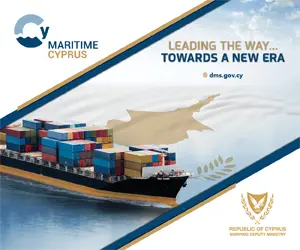To me, the ocean is many things. As an environmentalist and a mother, it’s an invaluable resource home to some of the world’s most incredible species, and an absolute wonder for my 9-year-old son. As an explorer, it’s a source of inspiration and adventure. As The TreadRight Foundation’s ‘Planet’ Ambassador, it’s an enormous source of hope for our future.
On World Oceans Day, we advocate for the protection of our world’s ocean waters and habitats, typically scaring scores of readers with doom and gloom through the litany of risks facing our oceans. Instead, I’d prefer to instill hope for the potential within our oceans to right some of our most egregious wrongs.

The wellbeing of humanity relies on the wellbeing of this planet. The list of challenges we collectively face can feel endless. The list of solutions addressing climate change, however, is steadily growing, and we may have to look no further than the waters surrounding us.
Our oceans need protection. We must eliminate the eight million pieces of daily plastic waste polluting our waterways by pursuing the long-term solution: prevention. But we wouldn’t be telling the whole story without addressing the fact that ocean restoration will unlock a natural means to mitigate humanity’s excessive carbon footprint and empower climate action.

According to Wildlife Trust’s “Let Nature Help” report, natural climate solutions could provide over a third of the cost-effective CO2 mitigation needed through 2030, while oceans absorb 20-35% of human-made CO2 emissions annually. Both the USA and Canada recently committed to nature-based solutions to fight climate change while the UK introduced regulations backing nature’s restoration as a viable means for carbon removal.
I believe in big, bold ideas based in nature and backed by science. I believe each one of us is the solution. This is why for the past ten years, I’ve worked with The TreadRight Foundation to amplify the impactful stories of the sustainable travel initiatives it supports worldwide.
Two of these projects, announced in 2021, are marine based carbon removal solutions, chosen for the way they support The Travel Corporation’s (TTC) Climate Action Plan. As a major travel group including brands such as Trafalgar, Contiki, Insight Vacations and Uniworld River Cruises, climate change is a critical issue – both for the way travel contributes, and for the myriad of developing solutions.

Beyond the massive undertaking of carbon removal, TreadRight’s first carbon removal partner GreenWave endeavors to prove zero input farming has numerous benefits. Actor and activist Woody Harrelson agrees: regenerative agriculture is “a simple solution—a way to heal our planet”. GreenWave is a regenerative ocean farming organization studying how kelp can be added to soil to increase its carbon storage potential while decreasing harmful nitrous oxide emissions on regenerative land farms. Kelp has strong potential to reduce both the need for nitrogen additives (fertilizer) on agricultural crops and nitrous oxide emissions in soils. This progress would have significant implications for climate benefit, as it counters the concern that increasing the amount of carbon soil naturally stores can result in increased nitrous oxide emissions – 300 times more potent than carbon dioxide emissions. If GreenWave’s pilot proves kelp can both reduce the need for nitrogen additives (fertilizer) and reduce nitrous oxide emissions while increasing the amount of carbon we rely on to be stored naturally in soil, regenerative ocean and land farms can work together to have a net climate benefit.
Project Vesta is exploring the natural power of the ocean as a carbon sink, while tackling the problem of ocean acidification. The organization is on a mission to harness the natural power of the oceans to remove a trillion tonnes of excess carbon dioxide from the atmosphere. They do this by taking olivine, a naturally occurring abundant rock found on every continent, crushing it up and moving it to beaches or coastal areas where it can be broken down further by the natural weathering process of wave action. As the olivine sand breaks down, carbon dioxide is removed from the air and becomes bicarbonate, which is used by marine organisms in their shells and eventually ends up as limestone on the ocean floor. Not only does this remove carbon from the air, but the process naturally reduces ocean acidity. Research has demonstrated that the chemistry of this process works and provides strong evidence that it is a highly affordable and scalable solution.

Project Vesta estimates olivine could capture 1 gigatonne (GT) of carbon dioxide per year if deployed on just 0.25% of global shelf seas, which is the amount of carbon that could be sequestered by more than 16 billion tree seedlings grown for 10 years. They currently have pilot beaches in the Caribbean and are studying a natural olivine sand beach in Hawaii. When Project Vesta has validated that the process works and is ecologically sound, they will share their results so Coastal Carbon Capture can be replicated in coastal areas worldwide.
These projects, which harness the power of the ocean to ultimately benefit people, wildlife and our planet’s future, show us the solutions we require already exist, provided to us by nature. I call on governments and businesses worldwide to seek out these solutions and help them scale so we may all benefit.
Céline Cousteau









